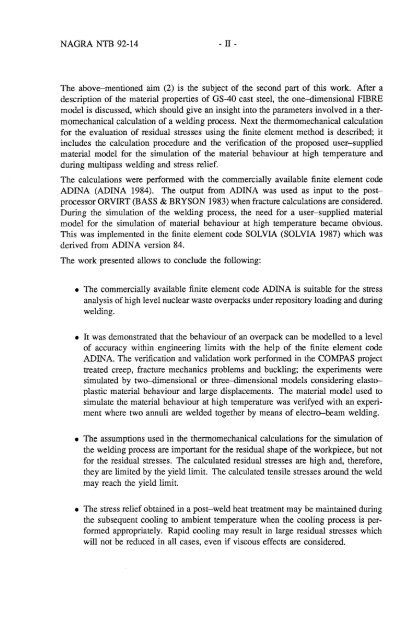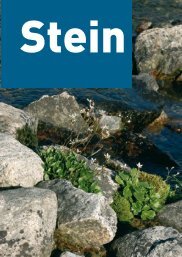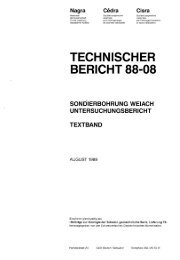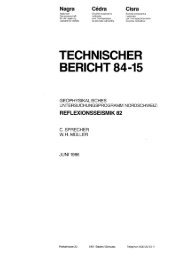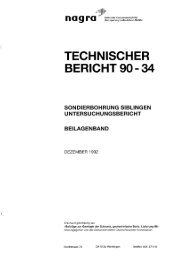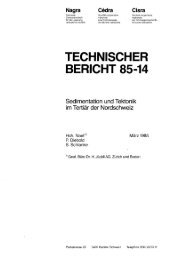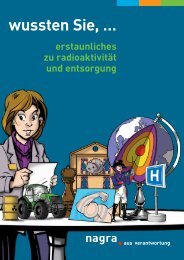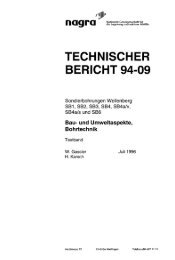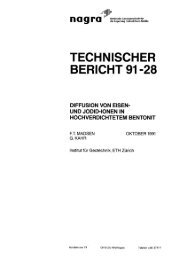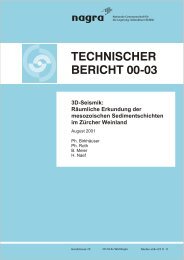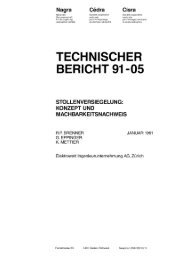TECHNICAL REPORT 92-14 - Nagra
TECHNICAL REPORT 92-14 - Nagra
TECHNICAL REPORT 92-14 - Nagra
You also want an ePaper? Increase the reach of your titles
YUMPU automatically turns print PDFs into web optimized ePapers that Google loves.
NAGRA NTB <strong>92</strong>-<strong>14</strong> - IT -<br />
The above-mentioned aim (2) is the subject of the second part of this work. After a<br />
description of the material properties of GS-40 cast steel, the one-dimensional FIBRE<br />
model is discussed, which should give an insight into the parameters involved in a thermomechanical<br />
calculation of a welding process. Next the thermomechanical calculation<br />
for the evaluation of residual stresses using the finite element method is described; it<br />
includes the calculation procedure and the verification of the proposed user-supplied<br />
material model for the simulation of the material behaviour at high temperature and<br />
during multipass welding and stress relief.<br />
The calculations were performed with the commercially available finite element code<br />
ADINA (ADINA 1984). The output from ADINA was used as input to the postprocessor<br />
ORVIRT (BASS & BRYSON 1983) when fracture calculations are considered.<br />
During the simulation of the welding process, the need for a user-supplied material<br />
model for the simulation of material behaviour at high temperature became obvious.<br />
This was implemented in the finite element code SOLVIA (SOLVIA 1987) which was<br />
derived from ADINA version 84.<br />
The work presented allows to conclude the following:<br />
• The commercially available finite element code ADINA is suitable for the stress<br />
analysis of high level nuclear waste overpacks under repository loading and during<br />
welding.<br />
• It was demonstrated that the behaviour of an overpack can be modelled to a level<br />
of accuracy within engineering limits with the help of the finite element code<br />
,,-\'DINA. The verJJication and validation work performed in the COMPAS project<br />
treated creep, fracture mechanics problems and buckling; the experiments were<br />
simulated by two-dimensional or three-dimensional models considering elast(}plastic<br />
material behaviour and large displacements. The material model used to<br />
simulate the material behaviour at high temperature was verifyed with an experiment<br />
where two annuli are welded together by means of electr(}-beam welding.<br />
• The assumptions used in the thermomechanical calculations for the simulation of<br />
the welding process are important for the residual shape of the workpiece, but not<br />
for the residual stresses. The calculated residual stresses are high and, therefore,<br />
they are limited by the yield limit. The calculated tensile stresses around the weld<br />
may reach the yield limit.<br />
• The stress relief obtained in a post-weld heat treatment may be maintained during<br />
the subsequent cooling to ambient temperature when the cooling process is performed<br />
appropriately. Rapid cooling may result in large residual stresses which<br />
will not be reduced in all cases, even if viscous effects are considered.


